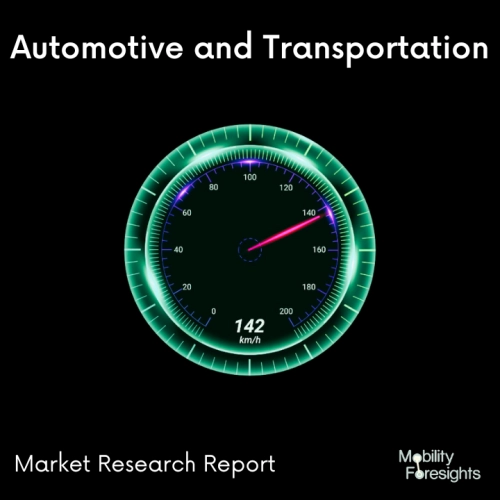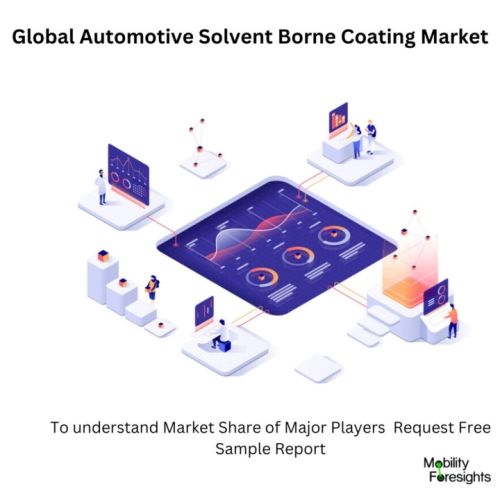
- Get in Touch with Us

Last Updated: Apr 25, 2025 | Study Period: 2023-2030
One kind of coating system that is frequently utilised in the automotive industry is automotive solvent-borne coatings. Solvents are used as the main carrier of the coating components in the formulation of these coatings. They are used to offer protection, durability, and an appealing finish to a variety of automotive surfaces, including metal bodies, plastic parts, and interiors of vehicles.
Resins, pigments, solvents, and additives are the key ingredients in solvent-borne coatings. When the solvent evaporates, the coating is held together by resins, which also form a protective film. While solvents serve as transporters for the coating's components and make application easier, pigments give the coating colour and opacity. To improve particular qualities like adhesion, flow, and drying time, additives are used.
To improve particular qualities like adhesion, flow, and drying time, additives are used.There are various benefits to solvent-borne coatings in the automotive sector.
Excellent adhesion is provided to a variety of substrates, such as metals, plastics, and composites, resulting in long-lasting defence against corrosive agents, ultraviolet light, and chemical exposure. Additionally, these coatings provide automobiles a glossy sheen and a variety of colour options, improving their entire appeal.
Due to the volatile organic compounds (VOCs) that are present in the solvents, it is significant to note that the usage of coatings that are solvent-borne has sparked environmental concerns.
VOCs can be detrimental to human health and contribute to air pollution. Regulatory agencies and automakers have shifted to alternative coating technologies, like aqueous and powder coatings, which have reduced VOC emissions, in response to these worries.Overall, because of their superior performance and appealing appearance, automotive solvent-borne coatings have been widely used in the industry.
But as coating technology continues to evolve, new eco-friendly substitutes are being developed while still providing high-quality finishes and protection for automobile surfaces.

The global automotive solvent borne coating market accounted for $XX Billion in 2022 and is anticipated to reach $XX Billion by 2030, registering a CAGR of XX% from 2023 to 2030.
At its location in Erlenbach, Germany, PPG announced the beginning of expanded car OEM clearcoat production. In contrast to conventional techniques, the â¬3 million upgrade almost doubles the site's capacity for premium clearcoats while utilising sophisticated manufacturing technology to increase operating efficiency, sustainability, and flexibility.
The coloured coating that gives the vehicle the desired appearance is a solvent-borne basecoat. They are put on top of the priming layer and include pigments and binders. Basecoats can be finished in a variety of ways, including with solid colours, metallics, or pearl effects.
| 1 | Market Segmentation |
| 2 | Scope of the report |
| 3 | Abbreviations |
| 4 | Research Methodology |
| 5 | Executive Summary |
| 6 | Introduction |
| 7 | Insights from Industry stakeholders |
| 8 | Cost breakdown of Product by sub-components and average profit margin |
| 9 | Disruptive innovation in the Industry |
| 10 | Technology trends in the Industry |
| 11 | Consumer trends in the industry |
| 12 | Recent Production Milestones |
| 13 | Component Manufacturing in US, EU and China |
| 14 | COVID-19 impact on overall market |
| 15 | COVID-19 impact on Production of components |
| 16 | COVID-19 impact on Point of sale |
| 17 | Market Segmentation, Dynamics and Forecast by Geography, 2023-2030 |
| 18 | Market Segmentation, Dynamics and Forecast by Product Type, 2023-2030 |
| 19 | Market Segmentation, Dynamics and Forecast by Application, 2023-2030 |
| 20 | Market Segmentation, Dynamics and Forecast by End use, 2023-2030 |
| 21 | Product installation rate by OEM, 2023 |
| 22 | Incline/Decline in Average B-2-B selling price in past 5 years |
| 23 | Competition from substitute products |
| 24 | Gross margin and average profitability of suppliers |
| 25 | New product development in past 12 months |
| 26 | M&A in past 12 months |
| 27 | Growth strategy of leading players |
| 28 | Market share of vendors, 2023 |
| 29 | Company Profiles |
| 30 | Unmet needs and opportunity for new suppliers |
| 31 | Conclusion |
| 32 | Appendix |